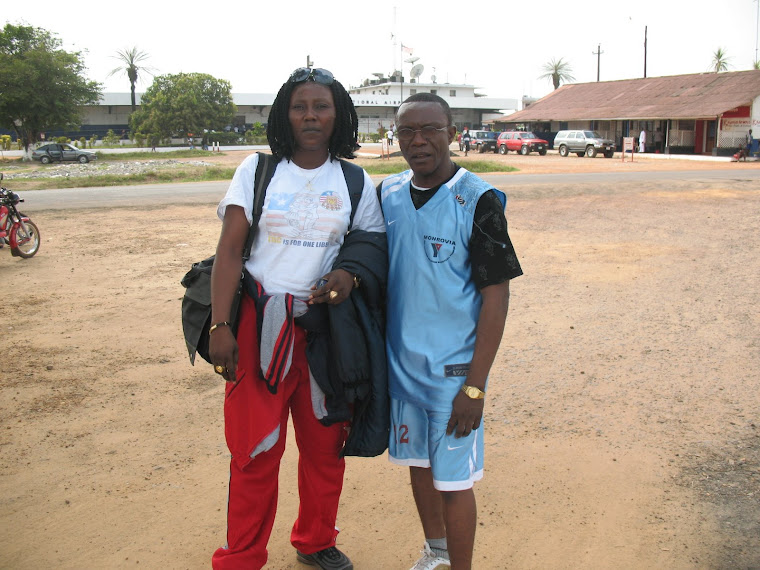...Becomes 3.5 Million People in Post War Liberia,
Monrovia -
Liberia now has a total population 3, 489, 072 (three million, four hundred and eighty nine thousand and seventy two) people, according to the preliminary results of the 2008 National Population and Housing Census.
The preliminary findings is the first conducted since the end of the fourteen-year civil war which claimed the lives of an estimated 200,000 people and send hundreds of thousands others fleeing into other countries, creating a Diaspora as their homeland descended into anarchy.
PRELIMINARY FINDINGS
“The census preliminary results are being released for decision makers and researchers to combine with results from the surveys LISGIS has recently conducted namely: 2007 Liberia Demographic and health Survey (2007 LDHS), the core Welfare Indications Questionnaire, the Poverty participatory Survey (PPS), the National Establishment Census (NEC), etc. In order to establish an invaluable database for socio-economic development planning."
The firs census was conducted in 1962, followed by the 1974 Population and Housing Census. In 1984, Population and Housing Census was never published. The manuscript and most of the data went missing during the civil war. According to the United Nations prescriptions, Liberia should have had two censuses in 1994 and 2004 but the disruptions of civil order could not allow this to happen. In 2008, the population density of Liberia was 93 persons per square miles. This represents a 66 percent rise over the figure of 56 attained in 1984. Compared with some sub-Saharan nations, Liberia is moderate by African standards.
Dr. Edward Liberty, Executive Director of the Liberia Institute of Geo-Information Services, declared that Montserrado remains the county with the highest population of 1,144,806 people while Grand Kru as the county with the lowest population of 57,100. "The variance shows the impact of displacement, economic growth, road network, among others but also illustrates a 2.1 growth rate over the past twenty four years."
According to the report, “In specific terms, apart from Bong, Margibi and Nimba counties where the household size tended to remain the same, the rest of the counties were almost evenly split in terms of counties with rising household sizes and those that experienced a decline in the 1984-2008 inter-censal period. The national household size of 5.1 was exceeded in eight of the fifteen counties. The most dramatic fall in household sizes were in River Cess County while the reverse is true for Grand Gedeh, Maryland and River Gee.”
But Liberty says the 2008 Population and Housing Census is seen as the most plausible means to obtain recent information on the population of Liberia. “As such, the census preliminary results are being released for decision makers and researchers to combine with results from the surveys LISGIS has recently conducted namely: 2007 Liberia Demographic and health Survey (2007 LDHS), the core Welfare Indications Questionnaire, the Poverty participatory Survey (PPS), the National Establishment Census (NEC), etc. In order to establish an invaluable database for socio-economic development planning,” Liberty said.
The 2008 census, according to Liberty was a result of dedicated effort of the Census Commission, the Development Partners, the Board of Directors, the Management and staff of the Liberia Institute of Statistics and Geo-Information Services (LISGIS) supported by United Nations Population Fund (UNFPA), the Ministry of Internal Affairs and its local authorities, a total of 11, 618 field staff who were deployed throughout the country and the millions of Liberians and foreign residents who responded.”
President Ellen Johnson-Sirleaf, in a foreword to the findings obtained by FrontPageAfrica, declares that the statistics would serve as a guide for government and its partners in planning recovery programs. Though the result is preliminary, the President believes there will be little change in the final result that is being compiled.
According to Sirleaf, post war socio-economic planning and development of our nation is a pressing concern to any government and its development partners. “Such an onerous undertaking cannot be actualized with scanty, outdated and deficient databases. Realizing this limitation and in accordance with Article 39 of the 1986 Constitution of the Republic of Liberia, I approved on May 31, 2007, “An Act Authorizing the Executive Branch of Government to conduct the National Census of the Republic of Liberia.”
Sirleaf says the country currently finds itself at the crossroads of a major rehabilitation and reconstruction. Virtually, every aspect of life has become an emergency and in resource allocation, crucial decisions have to be taken in a carefully planned and sequenced manner. “We note that the statistics are not final and that the final report of the 2008 National and Population Census will require sometime to be compiled. In the interim, I recommend that these provisional statistics be used in all development planning for and in the Republic of Liberia.”
Sirleaf sid although the government contributed considerable resources to this project, the requirements were clearly beyond our capacity and it is with pleasure that we recognize the support of the United Nations Population Fund (UNFPA) whose timely and continuous intervention gave impetus to the execution of the exercise. We would also like to thank the United States Agency for International Development (USAID), United Nations Mission in Liberia (UNMIL) and United Nations Development Program (UNDP) for being partners on this first phase of the project.
For outgoing Planning Minister, Dr. Togah McIntosh, Liberia now has reached a reasonable experience in holding censuses and the 2008 Census was conducted against the background of an almost complete lack of timely, accurate, sufficient and time series data for socio-economic, political and physical development planning. “In the same vein, not all the required technical expertise for such an undertaking was available in-country. In addition, although Government of Liberia exhibited very high commitment of political will and put in considerable amounts of resources the required levels of financial and other inputs could not have been provided given the overcrowding of demands from other equally important sectors of the economy.”
Notwithstanding, McIntosh says, the Census programme is adjudged to have been executed within acceptable limits of the highest international standards, using state-of-the-art technology and expertise at all stages of the census operations. The extra resources and other support have been coming from a plethora of organizations whose contributions and moral support are hereunder acknowledged.
McIntosh says the mapping exercise of census taking has been improving over the years and the 2008 NPHC portrays these improvements. “However, there are two basic additions to this census; foremost, the shift from de jure censuses of 1962, 1974 and 1984 to a de facto census in 2008 and secondly, the inclusion of an Agricultural module. The de jure census records usual residents of the household while the de facto one records persons who spent a reference night in the household. De facto censuses are easier to conduct and, hence, most countries adopt them. Liberia, being predominantly agricultural country, the Agricultural Module was introduced with the aim of generating a sampling frame that will be used to design and implement agricultural surveys in the future. “
The enumeration started on the morning of March 21, 2008 and ended in the evening of March 30th 2008. It was done by trained enumerators who administered a standard questionnaire to the household heads or any other knowledgeable household members. According to the report, arrangements were made to ensure that special categories of the population were enumerated; for example, street children who do not live in formal households, in-mates in hotels and transients at air and sea ports.
Monday, June 23, 2008
Subscribe to:
Post Comments (Atom)




No comments:
Post a Comment